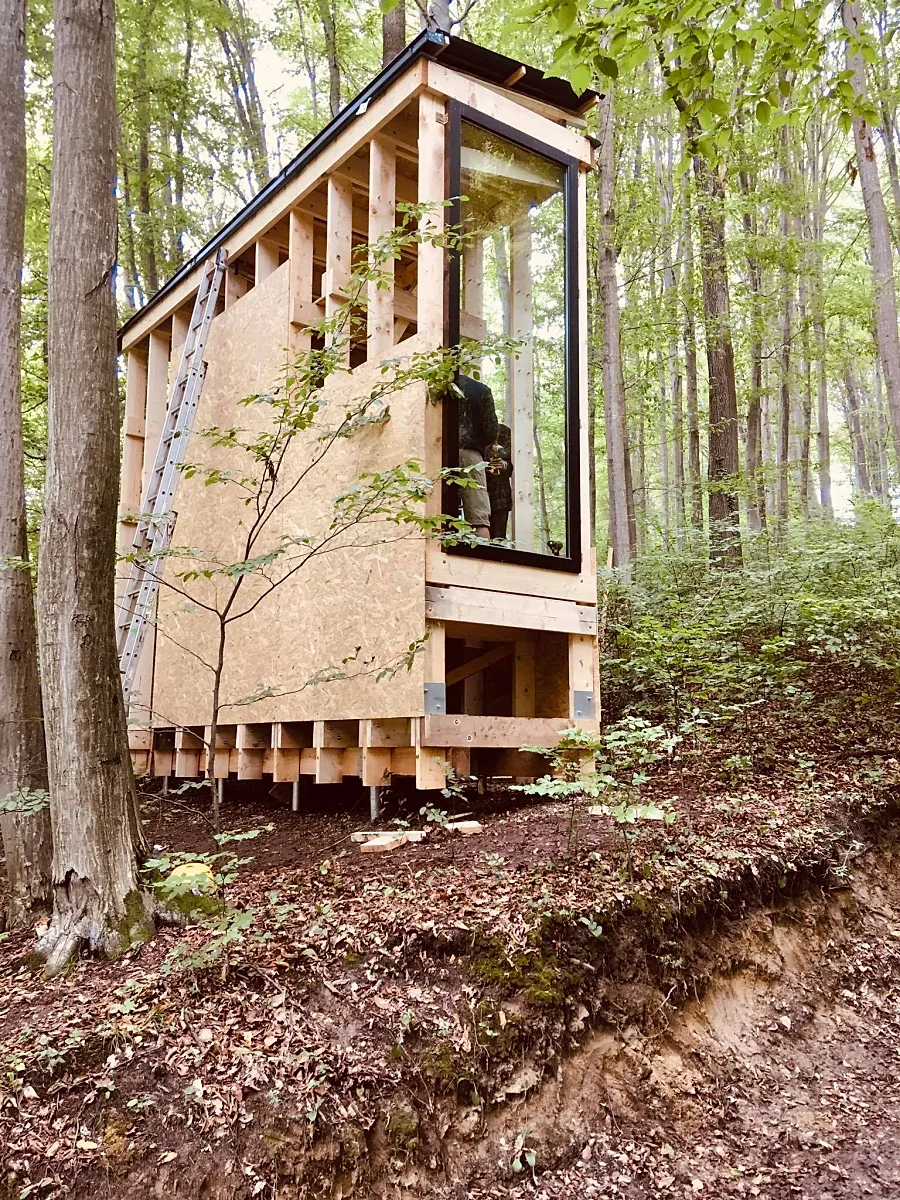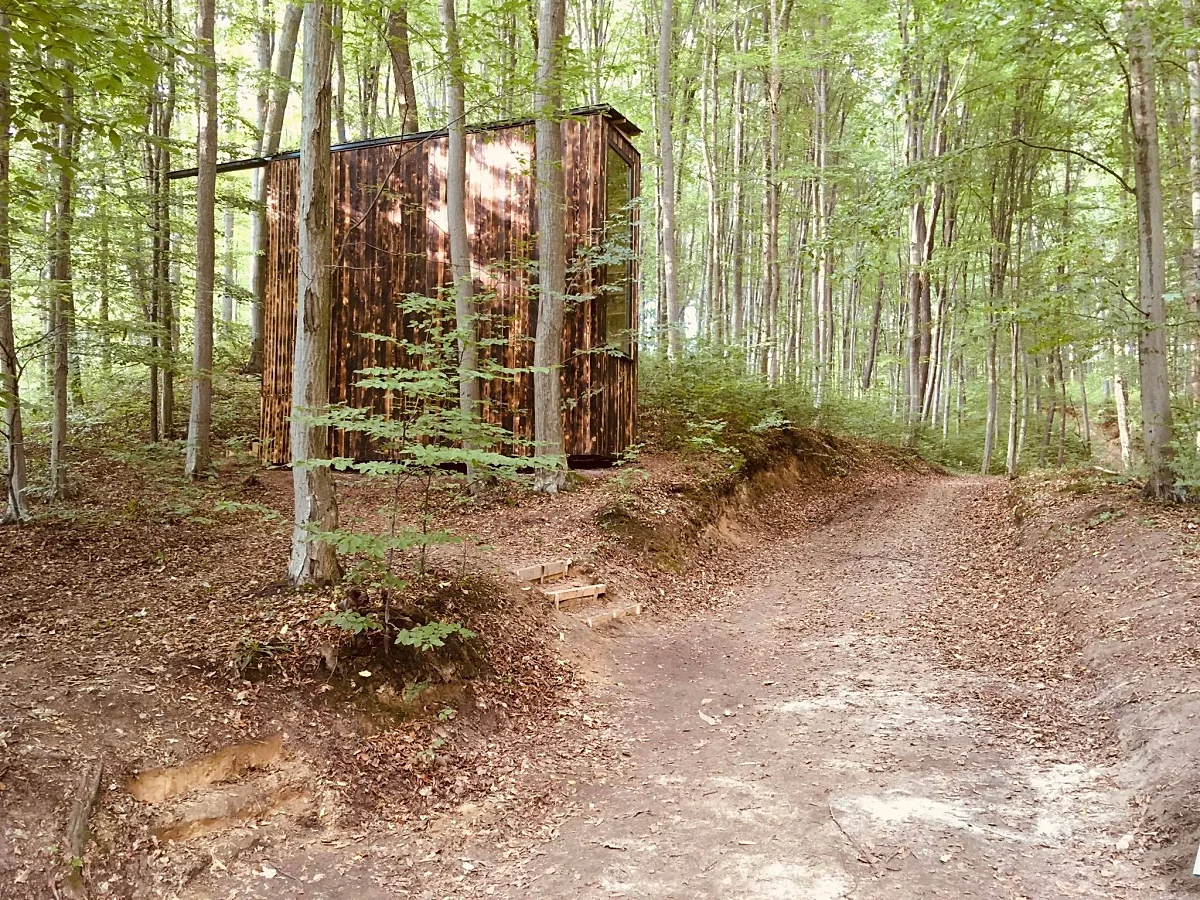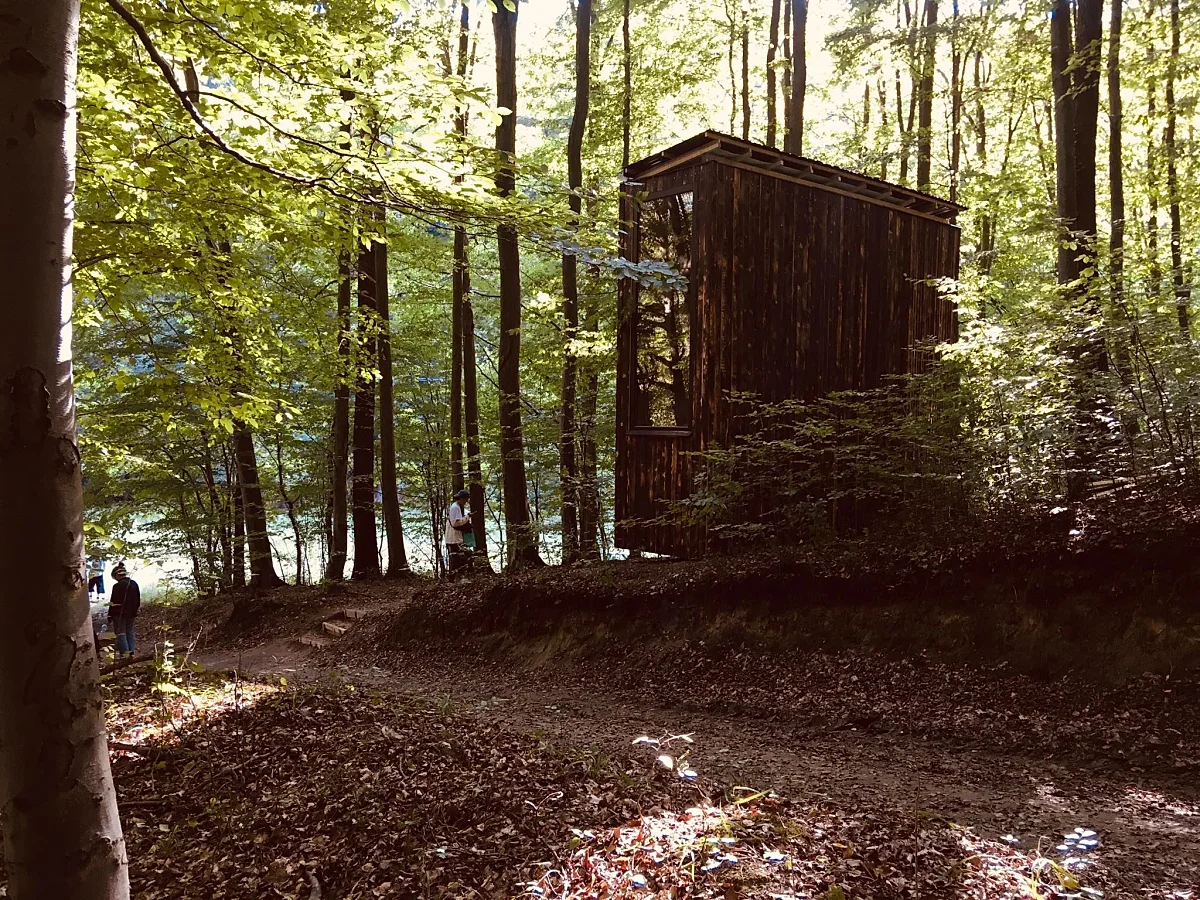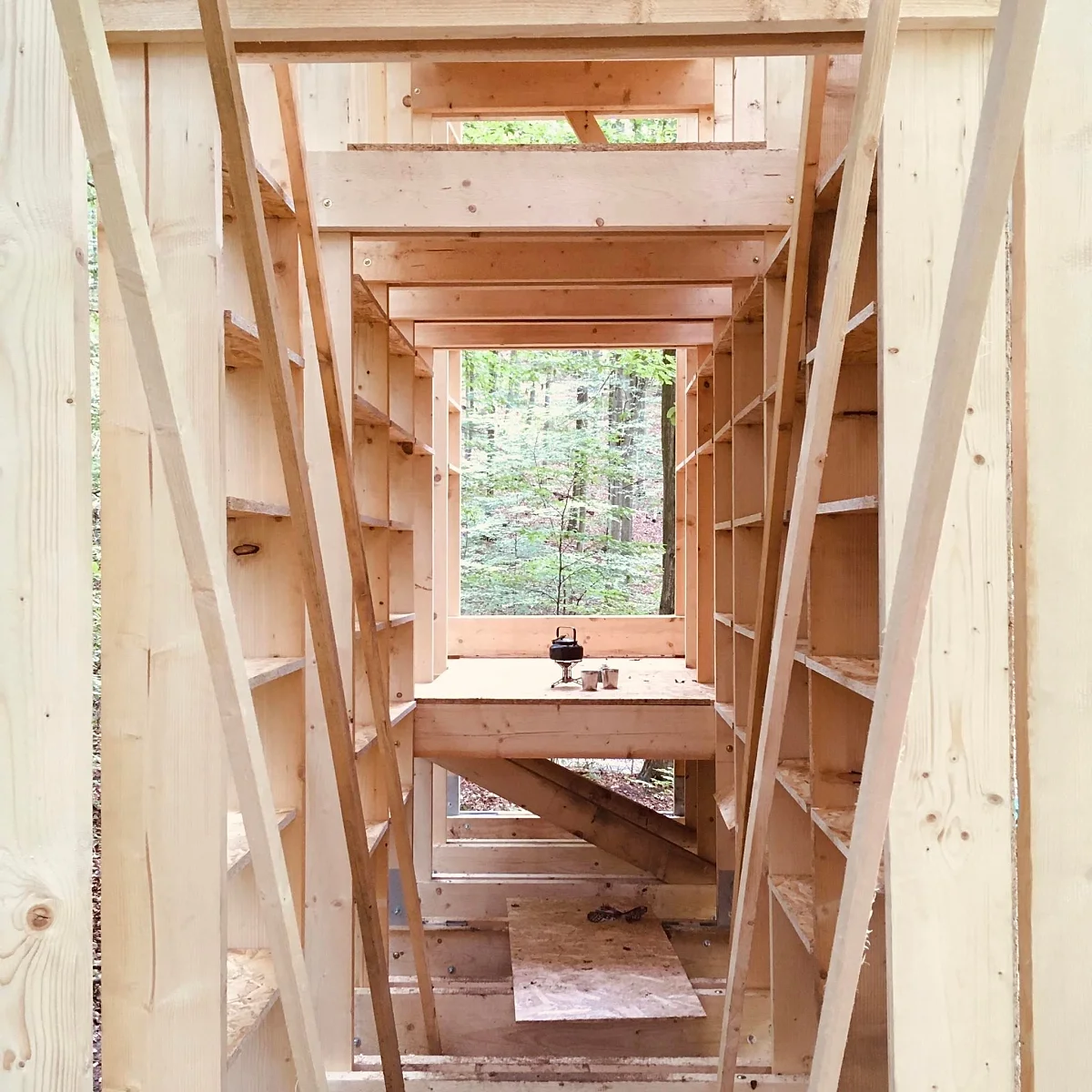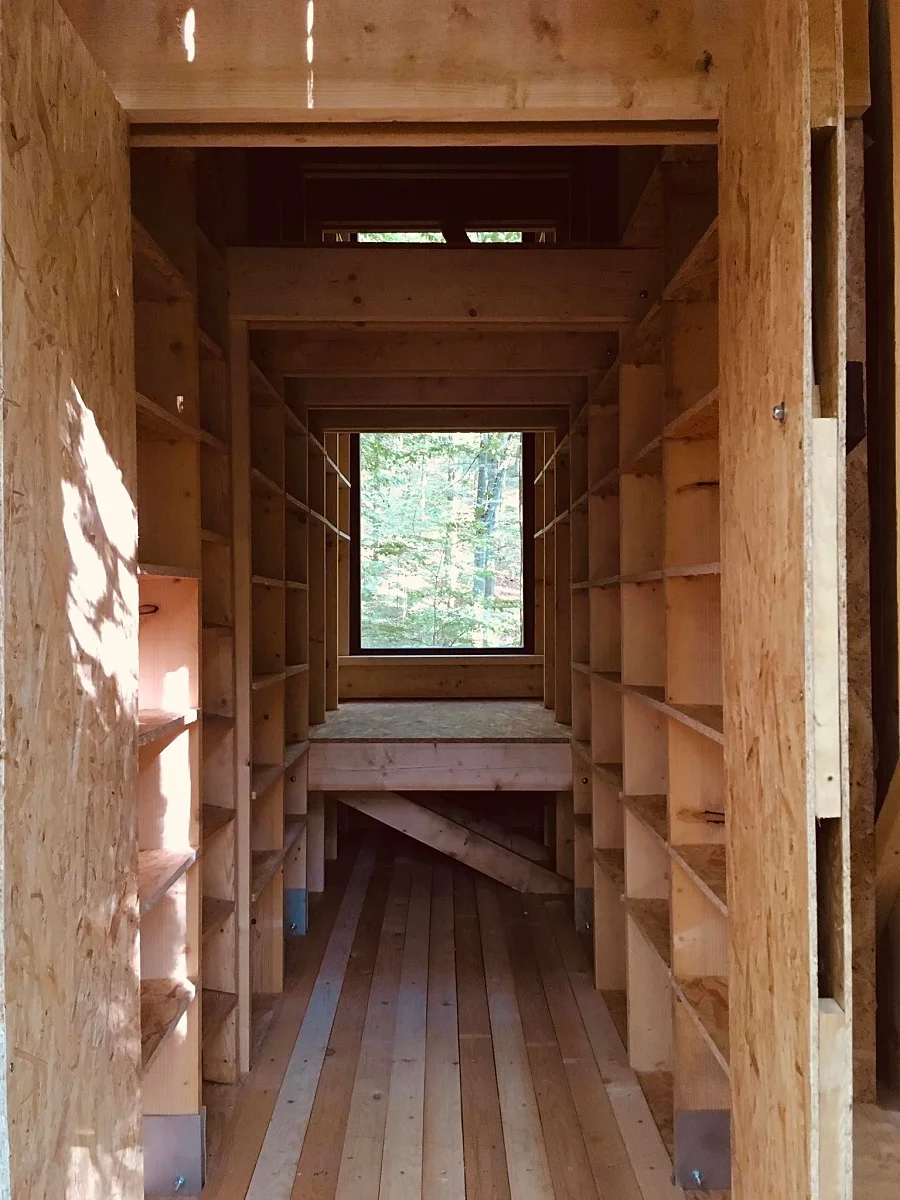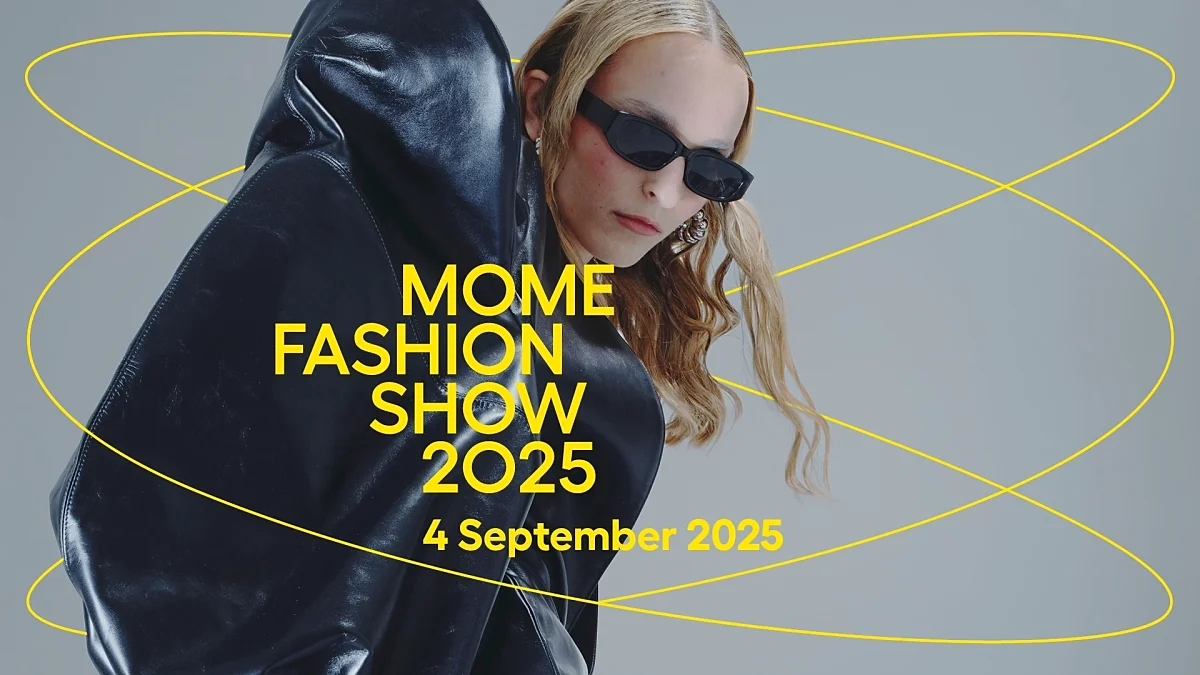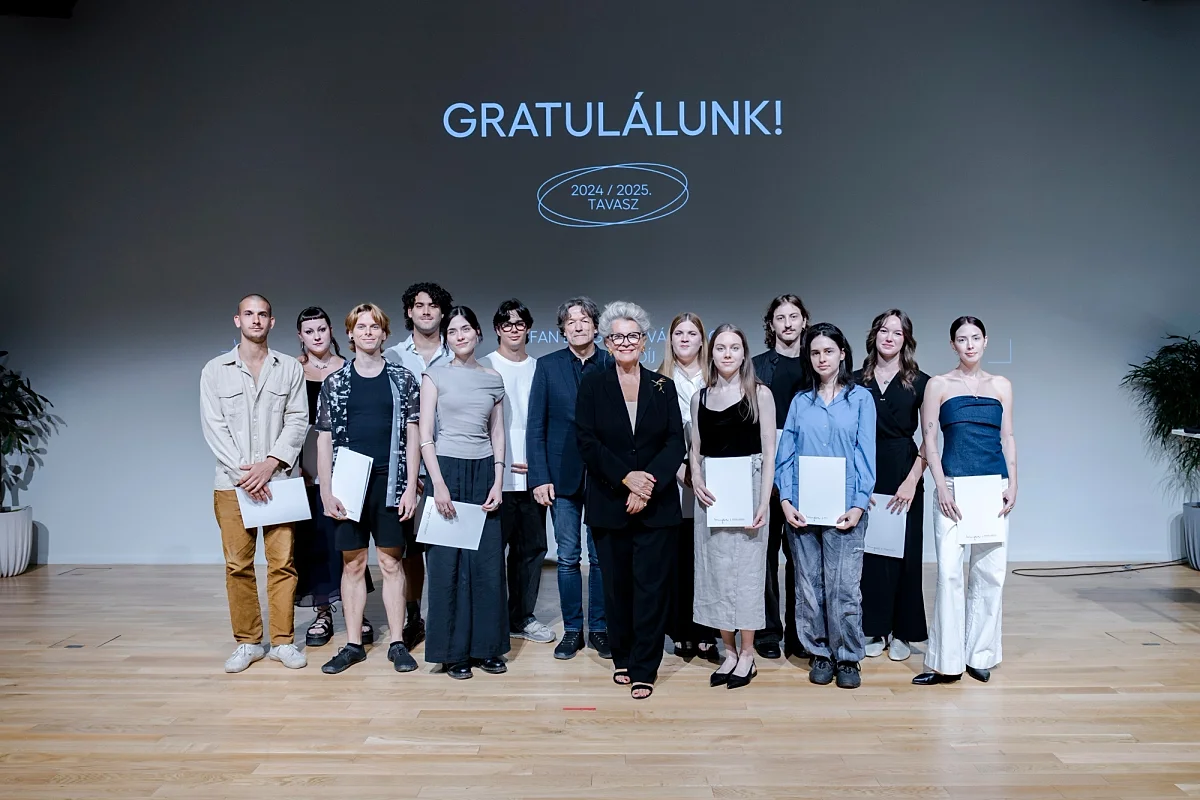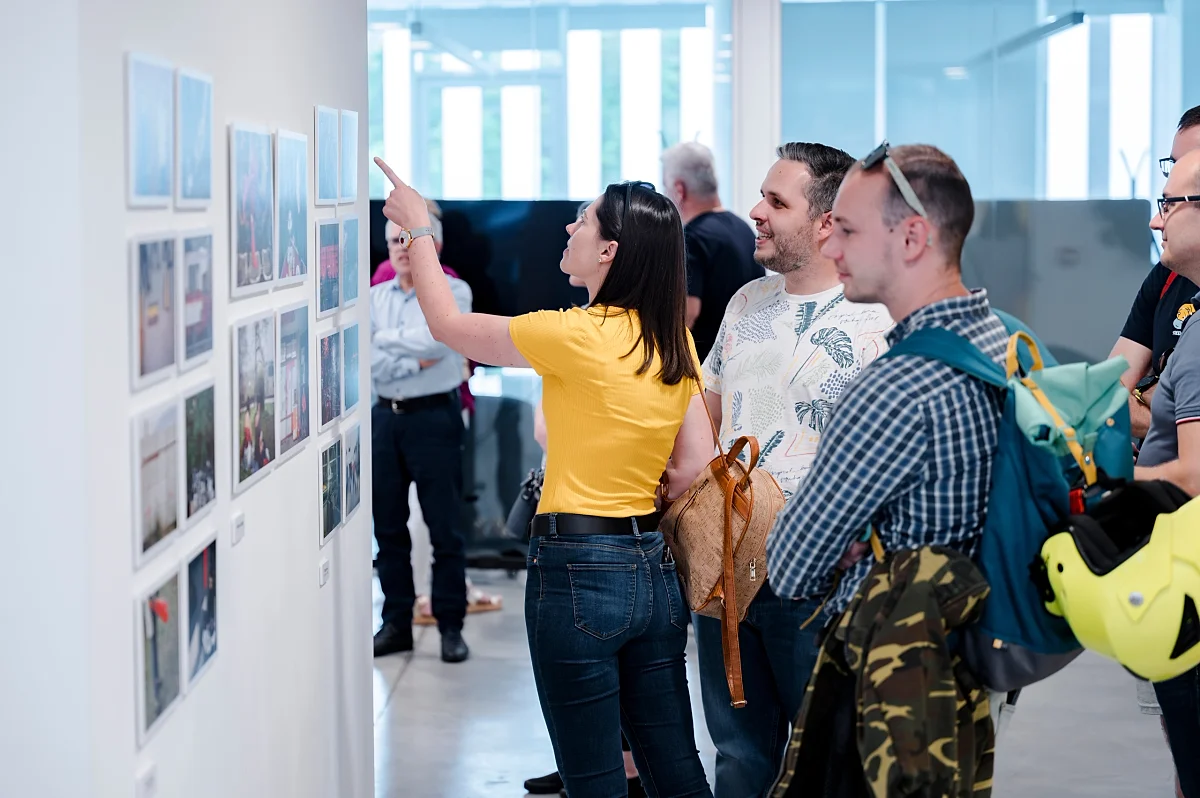
READING CABIN in Csingervölgy
As Dániel Baló, teacher of the MOME students designing the reading cabin told the Veszprém County News Portal, the basic concept was developed by students Imola Fazakas and Liza Formanek as part of a university course and further improved in the next semester together with their fellow students.
The idea of a bivouac shelter was incorporated into the concept to enable hikers to spend the night at the cabin and even heat up food using a gas heater. The interior of the 1.5 meters wide, 5 meters tall and 6 meters long cabin consists of two bookshelves facing each other, with bunks stacked above.
According to Baló, the students made everything themselves with the exception of the glass windows. The cabin was built over a week, using ground screws provided by a business free of charge, and burnt planks. The covered, open porch is accessible to everyone, while the cabin itself, which can house up to 6 people, can be unlocked after putting in a code.
To read more, visit https://www.veol.hu/helyi-kultura/2022/09/a-muveszet-es-a-termeszet-talalkozasa-a-csinger-volgyi-parkerdoben
To read more, visit https://welovebalaton.hu/cikk/2022/9/13/latnivalok-kultura-erdei-olvasokabint-kapott-az-ajkai-molnar-gabor-parkerdo
Listen to the 17 November broadcast of Kossuth Rádió radio station on the subject: https://mediaklikk.hu/kossuth-radio/cikk/2022/11/16/vendeg-a-haznal-kert-es-gyerekirodalom/
